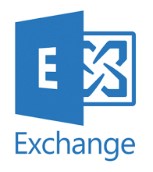
The lower cost of typical email hosting is not without a reason. Compared to Microsoft Exchange Online Plan 1 (50GB mailbox/50GB archive), third email hosting usually comes with very limited mail storage space, risk of data loss in event of endpoint failure apart from the many missing features listed here.
Advanced security capabilities
Microsoft Exchange offers secure connection and ease of setup through its “autodiscover” function (just email address and password). Anti-malware and anti-spam filtering are standard implementation tenant-wide.
Authentications are conducted over secured channels, reducing the risk of man-in-the-middle attacks. Security is further enhanced through implementation of 2FA/MFA requirement either periodically or when connecting from outside of trusted locations. (e.g. Outside company’s network)
While generic email hosting addressed this issue through implementation of TLS/SSL requirements, setup is more complex and requiring users to remember server information and ports to connect to.
No duplicate mail issues / Data loss without backups
Mailbox contents are synchronized with the server mailbox, eliminating duplicate emails caused by client-side issues.
Mailbox synchronization across devices: Changes made to emails and entries are updated across multiple connected devices, ensuring consistent access to mailbox content.
Push mail functionality: Incoming emails are immediately delivered to all connected nodes, allowing for real-time access to new messages.
On third party email hosts, if the “leave a copy on the server” option is not set and there are no backups, emails downloaded on a client device can be lost in the event of a disk failure. Even so, “leave a copy” doesn’t create the same folder structures on another Outlook mail client. Each device operates independently, leading to challenges in maintaining consistency across devices.
Native Outlook support
Access from various devices (PCs, Macs, web browsers, iPhones, and other mobile devices) on a consistent and familiar Outlook interface as on Outlook Web Access.
Access your emails, calendar, contact, task and corporate Global address list synchronized across devices. Share your calendar with colleagues showing your free/busy periods.
Synchronization of mailbox folders ensures Inbox, Sent Items, Drafts, and any sub-folders are synchronized across devices, making the same emails and folders available on all connected nodes.
Desktop version of Office 365 full suite of application (up to 5 installs) is available too on plans like Microsoft 365 Business Standard and Microsoft E3 plan.
Support for multiple domains
Office 365 allows the use of multiple domains within a single fee, offering flexibility for businesses with different domain requirements. Email addresses in secondary domains can be created as Shared Mailboxes (no cost and tied to a main mailbox), allowing you to separate different email addresses to their individual folders.
Delegation functionality allows multiple users can access and share a mailbox with a consistent view and interface.
Mail retention policy
Office 365 offers the ability to retain deleted emails for recovery purposes or to comply with corporate policies and regulatory requirements.
Azure Active Directory integration
With Azure AD, managing devices and licensing can be done from a single unified portal and also allowing a use to self-manage passwords and reducing IT support for simpler tasks.
Other features and more
Data safeguards – Data loss prevention (DLP) capabilities prevent users from mistakenly sending sensitive information to unauthorized people. With globally redundant servers, premier disaster recovery capabilities, and security experts monitoring Exchange Online, your data is safeguarded 24/7.
Microsoft compliance offerings covers CIS Benchmark, ISO 27701, HIPAA / HITECH, MAS + ABS (Singapore) and more.
Reliability – Microsoft guaranteed 99.9% uptime, financially-backed service level agreement, you can count on your email always being up and running.
Stay in control – With Admin Center, you maintain control over your Azure/Exchange environment without the complexities of having to manage hardware/software changes.
eDiscovery – Run In-Place eDiscovery across Exchange from a single interface through the eDiscovery Center.
Security across devices – With mobile device policies, you can create approved mobile device lists, enforce PIN lock, and remove confidential company data from lost phones.
In-place archive – Give your users an in-place archive, so they can keep all their important data in one place.
IT-level phone support – IT-level phone support is available to you 24 hours a day, 7 days a week.
Register your domain to start setting up Office 365 for your business.
If you already have Office installed on your device, sign-up for an account to purchase Microsoft Exchange Online Plan 1.
If you require Microsoft Desktop Apps, you may consider Microsoft 365 Business Standard or Office 365 Plan E3.
There is also a yearly license that is purely Office Desktop Apps – Microsoft 365 Apps for Business for business looking at subscription-based desktop applications.
So which license should I choose?
If you already have users with existing Microsoft Office licenses and requires only mailbox space then choose Exchange Online.
If your users require additional features like OneDrive for Business (1TB), Teams and Sharepoint Online, then having Office 365 E1 (if above 300 users) or Microsoft 365 Business Basic (no desktop apps) is a better option.
Some business owners may feel that paying $600 for Office 2019/2021 perpetual license for a single install is not as cost effective as subscription modeled Office 365 as Office 365 provides up to 5 installations and can be upgraded to newer version once available while perpetual licenses are tied to the version purchased and cannot be upgraded to a newer version.
If you have any queries, feel free to contact us via the following form. We will response to you soonest possible.
